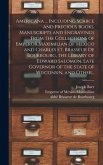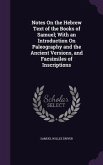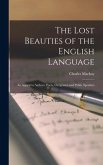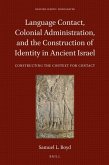The One Primeval Language Traced Experimentally Through Ancient Inscriptions, Volume 2, by Charles Forster, delves into the fascinating and ambitious quest to uncover the original language of humankind. Published in 1851, this volume continues the author's exploration of ancient inscriptions from across the globe, seeking to identify common roots and alphabetic characters that might reveal the primeval tongue. Forster meticulously examines inscriptions from diverse locations, including the Sinai Peninsula, aiming to extract "the Voice of Israel From the Rocks of Sinai" and other vestiges of patriarchal tradition. This work represents a significant, though ultimately speculative, contribution to the fields of historical linguistics and biblical studies, reflecting 19th-century efforts to reconcile linguistic theory with religious narrative. While its conclusions are debated, the book remains a valuable artifact of its time, illustrating the intellectual currents that sought to connect language, history, and faith. This work has been selected by scholars as being culturally important, and is part of the knowledge base of civilization as we know it. This work was reproduced from the original artifact, and remains as true to the original work as possible. Therefore, you will see the original copyright references, library stamps (as most of these works have been housed in our most important libraries around the world), and other notations in the work. This work is in the public domain in the United States of America, and possibly other nations. Within the United States, you may freely copy and distribute this work, as no entity (individual or corporate) has a copyright on the body of the work. As a reproduction of a historical artifact, this work may contain missing or blurred pages, poor pictures, errant marks, etc. Scholars believe, and we concur, that this work is important enough to be preserved, reproduced, and made generally available to the public. We appreciate your support of the preservation process, and thank you for being an important part of keeping this knowledge alive and relevant.
Bitte wählen Sie Ihr Anliegen aus.
Rechnungen
Retourenschein anfordern
Bestellstatus
Storno

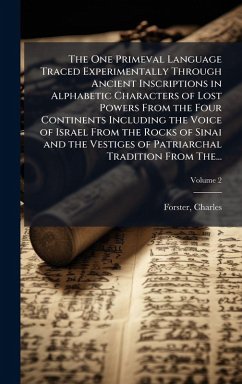
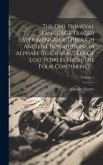
![Analytic Orthography [microform]: an Investigation of the Sounds of the Voice and Their Alphabetic Notation: Including the Mechanism of Speech and Its Analytic Orthography [microform]: an Investigation of the Sounds of the Voice and Their Alphabetic Notation: Including the Mechanism of Speech and Its](https://bilder.buecher.de/produkte/65/65510/65510118m.jpg)

